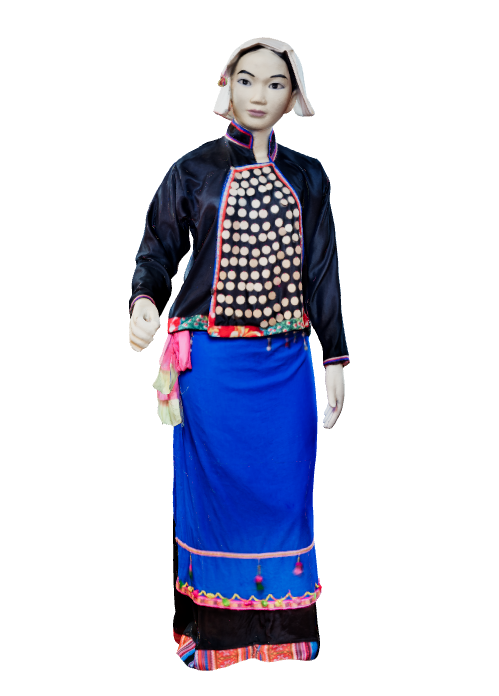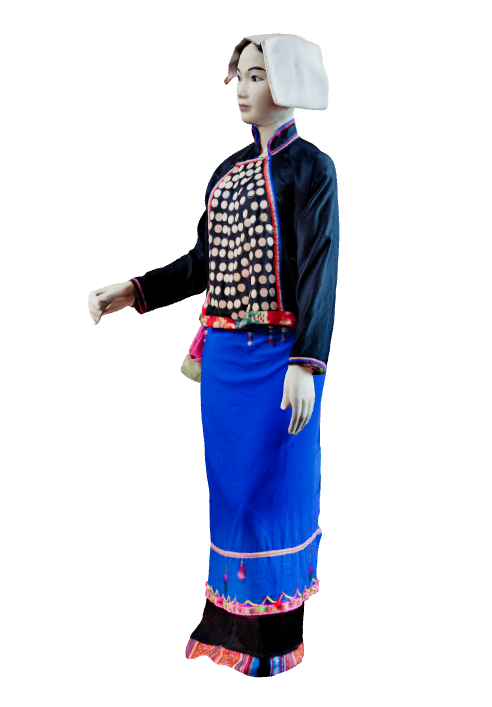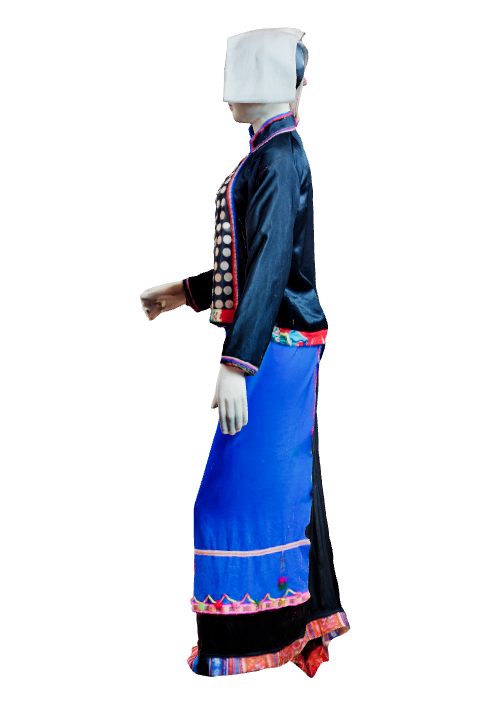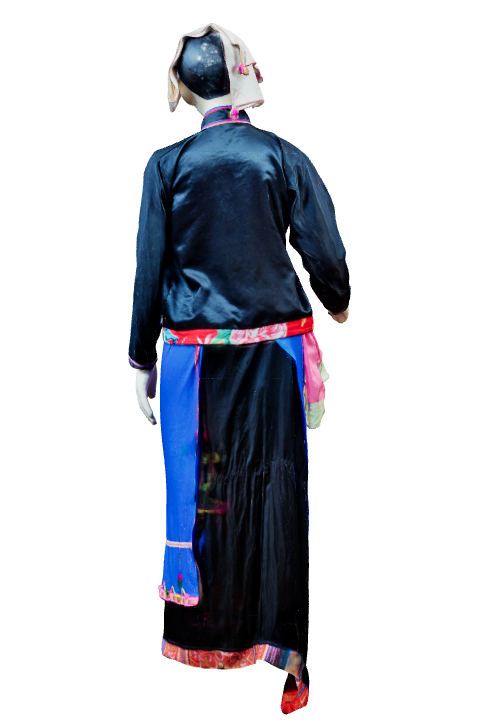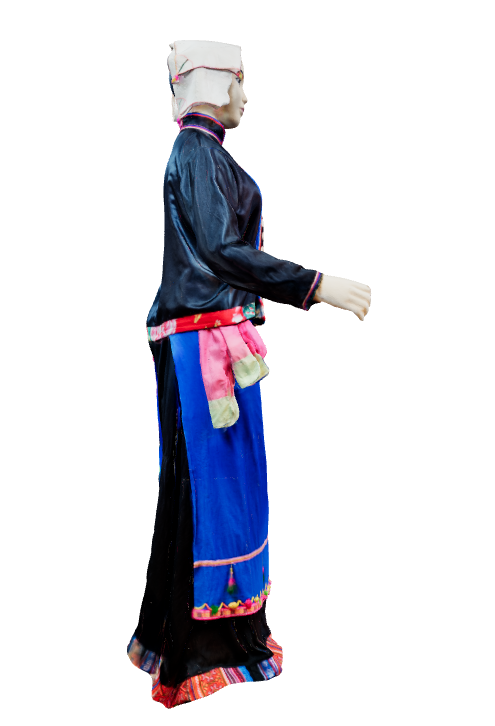Traditional Costume
Female - Si La ethnic group
Ethnic costumes: SI LA ETHNIC GROUP
CHARACTERISTIC DESCRIPTION
Si La women often wear a 3-part short shirt with the ethnic name "phi khờ". The collar (phi khồ ồ lứ) is black, with a detachable collar connected to the upper part of the body. Around the collar, there are two strips of green and red fabric. The back part (phi mộ) extends from the collar to the entire length of the back body The front part (phi chơ) covers the chest in a pointed triangle shape that creates a design resembling the opening under the armpits. Three silver or aluminum buttons (phi sứ) are attached to the front part. The sleeves are narrow tube-shaped (là nụ). At the cuff, there is an additional section made up of five small fabric strips in different colors (green, red, and white). This multi-colored section (nụ chi to) highlights stand out against the black shirt background. The hem (phi khồ tồ kha) is an extra piece added to the outermost part of the back of the shirt. Typically, this additional fabric is a different color from the shirt (often green, white, or yellow). Although the fabric of the shirt is the same for both unmarried and married women, the blouses of unmarried girls are adorned with large silver coins on the front section for decoration. Married women wear a decorated the “yếm” (a type of camisole).
The Si La people refer to the “yếm” as "ồ do" and only use it for married women. It is a wide rectangular piece of fabric, approximately 70x75cm in size, draped from the back to the front to cover the exposed chest and abdomen. The top part of the “yếm” is sewn horizontally, attaching two strips of fabric at the two upper corners to tie the chest. This section is adorned with rows of silver coins, similar to the way girls' shirts. These coins are taken from the shirt the woman wore during her girlhood.
Each girl will receive a "do phì" headscarf as a gift from her lover, which is sewn by his mother frequently. After getting married, the girls will use this headscarf until they have their first child, at which point they will replace it with another scarf.
Once the first child is born, the headscarf becomes even more important for women, as it helps others identify how many sons and daughters that woman has. From this point onward, the mother treasures the headscarf, known as "ô phạ."
